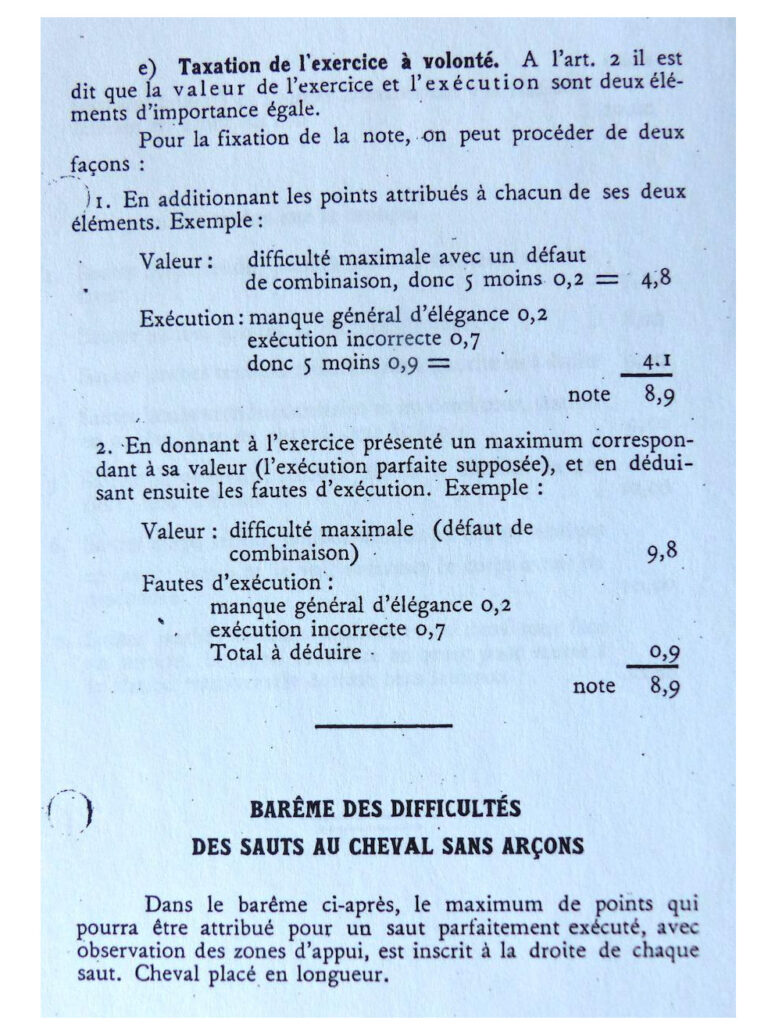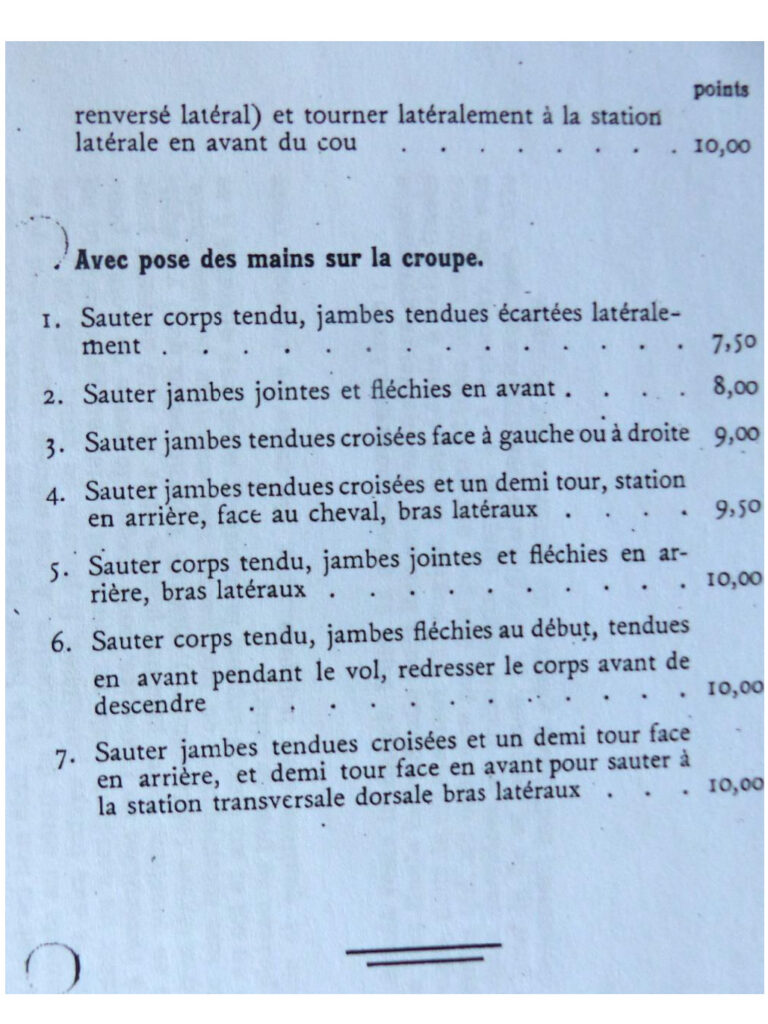Gym nerds have heard of a magical 12-page Code of Points. But few have seen it.
Well, good news: We, the gymternet, now have the very first Code of Points in our possession thanks to Kathi-Sue Rupp and Hardy Fink.
So, with no further ado, here’s the very first men’s Code of Points.
By the way, if you’re looking for the very first women’s Code of Points, you can find it here.
You’ll notice that the entire document is in French. There wasn’t an official English translation. But the AAU, the U.S. governing body at the time, eventually printed an English translation of the document. (Available below.)
To give you some context, here’s why this document is important. If you’d like to learn the 1949 Code’s backstory, head over to this post.
Stability
Before the Code of Points existed, the rules for every Olympic Games and every World Championships changed.
That included the number of judges. To give one example, at the 1907 International Tournament (now called the World Championships), there were two judges per event. One year later, at the 1908 Olympic Games, there were three per event.
Gymnastics Math
In addition to codifying the word “perfect” into our gymnastics vocabulary, the 1949 Code of Points codified our way of doing gymnastics math. It established that there would be four judges, that the high and low scores should be dropped, and that the remaining two numbers should be averaged. (This was also the math used at the 1948 Olympics.)
While we have more judges nowadays, we still drop the high and low numbers.
Deductions
Nowadays, we can’t imagine watching gymnastics competitions without a list of deductions. But set deductions didn’t always exist. For example, at the 1934 World Championships, this was the scoring scale:
0 points for failure to perform,
2 points for faulty execution,
4 points for average execution,
6 points for satisfactory execution,
8 points for good execution,
10 points for excellent execution.
(Source: Dodatek Techniczny do Przewodnika Gimnastycznego “Sokół,” 1933, N. 10)
In 1934, there weren’t concrete deductions, which led Dr. Klinger of Czechoslovakia to comment:
Nowhere is it said how and which misdemeanors are punished [i.e. which deductions are taken]. Thus, the complete result of several months of effort of the competitor is left to the judge, who, if his qualification is not established, can seriously harm the competitor without anything other than the objection of non-professionalism.
Sokol, 1934, number 7/8
Nikde není řečeno, jak a které poklesky se trestají. Tím je tedy celý výsledek několikaměsíční námahy závodníka ponechán soudci, který když není dána mez jeho kvalifikaci, může závodníka těžce poškodit, aniž krom námitky neodbornictví se dá něco uplatnit
The 1949 Code of Points included some deductions. Those deductions were not as specific as the deductions in today’s Code of Points. Nonetheless, there were deductions. For example, a step or double jump on the landing was 0.1 or 0.2. That alone was an improvement over many decades of rules.
Note: In the rules for the 1938 World Championships, there were some deductions listed. For example, a gymnast lost 1 to 2 points if his feet touched the ground without letting go of the bars with his hands.
AAU Translation
French Text
Related:











